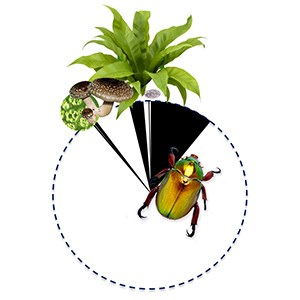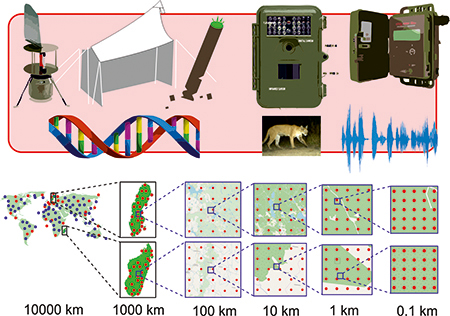There is a lot we don´t know about living nature. We do know that species communities around the world are changing because of, for example, climate warming, more intensive agriculture and forest harvesting. Yet, we have little idea about the current state of these species communities and about the processes shaping them. A full 80 per cent of all species are estimated to be so far unknown – a hopeless starting point if we are to manage our living natural resources sustainably.
These are some of the challenges faced by mankind today. And these are precisely the kind of issues that an ERC Synergy Grant allow researchers to address. The idea is that two to four leading researchers join forces across scientific disciplines. The projects are expected to contain both a clear element of risk and an opportunity for transformative breakthroughs.
"The idea is to think out of the box and answer questions that can only be solved through cross-disciplinary collaborations. As a researcher, you are confronted with the question: if you got the money to do something really big, then what would you really want to do? It is as great as important a challenge", says Tomas Roslin, professor of ecology.
Roslin is an expert of large, collaborative studies, where researchers collect materials from across the whole world. In the ERC project, he collaborates with two other researchers. Otso Ovaskainen is a professor of mathematical biology at the University of Helsinki. He develops revolutionary methods for combining ecological theory with data. The third researcher, David Dunson, is a professor at Duke University in the US, and a world leader in the application of Bayesian methods to Big Data.
"Together we form kind of a dream team for creating new insight into species communities around the world. We have the skills to both generate and interpret huge data so that we gain new knowledge about what shapes species communities. That knowledge is needed to understand the composition and distribution of biodiversity today, and how it will change in the future", says Tomas Roslin.
All this is possible because of the new methods for sampling DNA, sound and image data which have revolutionized ecology in recent years. Such methods will be further developed in the project. The idea is to use automated means to observe species, and thus obtain data which are directly comparable between different sites throughout the world. The project also develops methods for dealing with massive amounts of unknown species.
ERC Synergy Grants is one of the most prestigious European forms of financing. All researchers involved have to be excellent in their own fields, and together create something entirely new. Therefore, the selection process was tough. Of 37 successful applications, four included Swedish partners, taking on tasks from curing cancer to improving our insights into particle physics.
"It´s an understatement to say that we worked hard to get the funding. For several weeks before the European Research Council interview, we had daily contact per skype. But when it comes to grants of hundreds of millions, the selection must be thorough, says Tomas Roslin.
Now Tomas Roslin and his colleagues are more than happy.
"Finally, we have the opportunity to do what we are passionate about: to contribute to the understanding, management and conservation of biodiversity. There would be simply no other grants large enough to allow us to takje on the current, monumental tasks."
Of the total grant of 12.6M EUR, more than EUR 5M (SEK 55 million) goes to SLU.
More information
Prof. Tomas Roslin
Department of Ecology
Swedish University of Agricultural Sciences (SLU)
Phone: +46 (0)18-67 23 83. Email: tomas.roslin@slu.se
For the news item on ERCs pages, see https://erc.europa.eu/news/erc-2019-synergy-grants-results
Press release from University of Helsinki
Press image
(May be published without charge in articles about this press release, please acknowledge the photographer)

Tomas Roslin. Photo: Jenny Svennås Gillner


